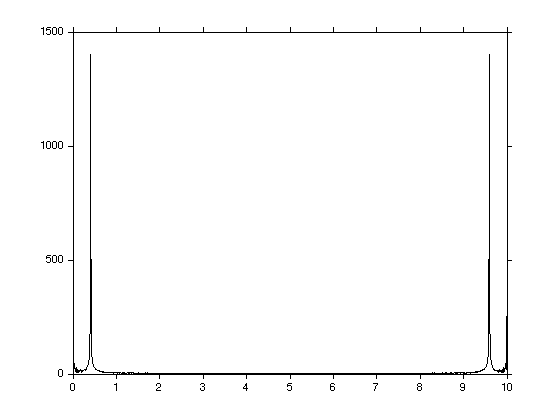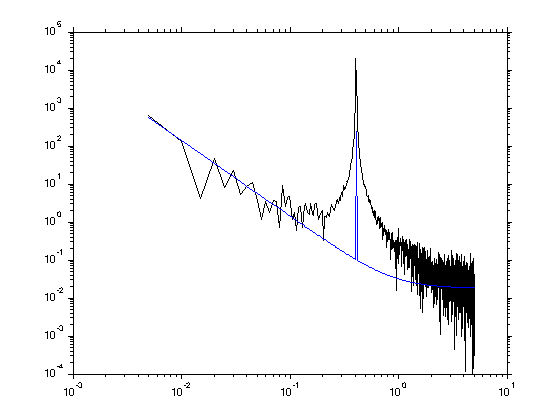Making a Power Spectrum
Contents
Getting started
load SynthSig;
Compute a raw fft
Make this the white noise process. Note that X is a complex quantity. Also note that X has the same size as x. Therefore, no information is lost.
We want dimensional spectra, so we multiply the FFT by dt.
dt = median(diff(sig.t)); size(sig.x_r) X = dt*fft(sig.x+sig.x_peak*10); X(1:4) size(X)
ans =
1 2001
ans =
1.0e+02 *
7.8893 0.4028 + 2.4841i 0.1274 + 1.1476i -0.0198 + 0.2030i
ans =
1 2001
we can invert to recover the original signal
temp = ifft(X); temp(1:4) sig.x_r(1:4)
ans =
1.2890 1.0057 0.4859 0.1502
ans =
0.1201 0.2291 0.1932 0.1802
Computing the frequencies
Matlab normalizes everything so the time between data points is unity. These frequencies are (k-1)/N, 1<=k<=N. In order to get dimensional frequencies, we need
dt = median(diff(sig.t)); N = length(sig.x); f = (0:N-1)/N/dt;
Plotting the FFT amplitudes.
Note that the high frequencies and the low frequencies look suspiciously similar.
figure(1);clf plot(f,abs(X))

It can easily be shown that if x is real then X(1+i)=X(N+1-i), i>1.
X(1+6) X(N+1-6)
ans = 6.5510 +46.8497i ans = 6.5510 -46.8497i
since half the spectrum is not used, it is usual to drop it from consideration.
Px=X(1:((N-1)/2)+1).*conj(X(1:((N-1)/2)+1)); f=f(1:((N-1)/2)+1);
Normalizing the spectrum
At this point we still have a dimensionless spectrum. We want sum(Px*df)=var(x) so the appropriate normalization turns out to be:
Px = Px*2/N/dt; loglog(f,Px,th.f,th.Px);
